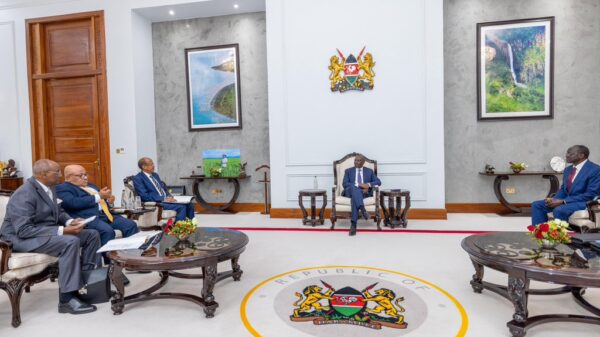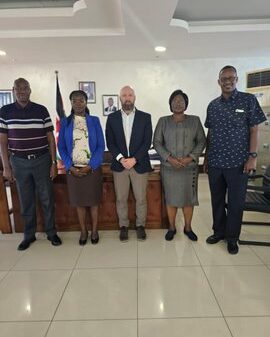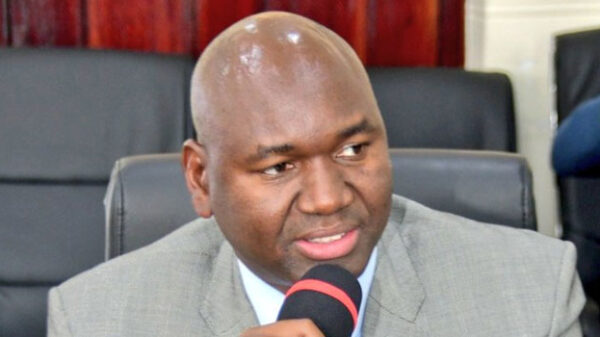Every 2nd of November since 2013, the World commemorates the International Day to End Impunity for Crimes Against Journalists (IDEI). This follows the United Nations General Assembly Resolution A/RES/68/163 at its 68th session.
This year, the United Nations Educational Scientific and Cultural Organization (UNESCO) has set the theme to be “Countering threats of violence and crimes against Journalists to protect freedom of expression for all” The organization notes that Ending impunity for crimes against journalists is one of the most pressing issues to guarantee freedom of expression and access to information for all citizens.
Global statistics (UNESCO) show that between 2006 and 2020, over 1,200 journalists were killed around the world, with close to 9 out of 10 cases of these killings remaining judicially unresolved which indicates an increasing cycle of violence as a result of weakening of the rule of law and of the judicial system.
While killings are the most extreme form of media censorship, journalists are also subjected to countless threats – ranging from kidnapping, torture and other physical attacks to harassment, particularly in the digital sphere. Threats of violence and attacks against journalists in particular create a climate of fear for media professionals, impeding the free circulation of information, opinions and ideas for all citizens.
Trends have shown that just like elsewhere in the world incidences in the East Africa represent a situation where threats of violence and attacks against journalists are not properly investigated which, too often, lead to more severe aggressions and murders. A recent study developed with the support of the Global Media Defence Fund showed that out of the 139 murders of media professionals in Latin America, half of them had received threats related to their work.
General elections especially pose serious challenges to journalists and media houses in the region. In the lead-up to the 2020 general elections in Tanzania for instance, the media regulator, the Tanzania Communications Regulatory Authority (TCRA), suspended media outlets for election-related coverage and placed restrictions on online content critical of the government and least one journalist was detained, according to a report by Human rights Watch.
In Uganda similar violations were witnessed during the 2021 presidential elections when the government blocked access to social media and messaging apps.
As Kenya prepares to hold a general election in August in 2022, it may not be spared the experiences of its neighbours if there are not efforts to pre-empt threats against the media both internal and external.
In 2019, Kenya with the support of UNESCO set up a national Mechanism for safety and protection of journalists which provides for collaboration of various agencies including media organizations, security agencies and non-governmental organizations to deal with the issues of impunity against journalists through three pillars: Prevention, Protection and Prosecution.
However there have been gaps in terms of operationalization of the mechanism. One of the biggest challenges include but are not limited to lack of investigations of cases of impunity against journalists which results in non-prosecution of perpetrators or/and inaction against them.
According to statistics compiled by the Media Council of Kenya whose mandate includes promotion and protection of the rights and privileges of journalists, the number of violations continue to show a growing trend for the past three years. By October 2021, the Council had documented 55 cases of violations with security agencies leading as the sources of the threats. There were 92 and 56 violations documented in 2020 and 2019 respectively. Cases of assault against journalists remain high (17) followed by arrests(12) and threats (9).
In terms of response, one notable trend is that while many journalists report these cases to police, there is little effort to follow through the process in pursuit for justice either by victims to report or follow up their own cases coupled with weak support by duty bearers from newsroom manager/ employers, police and prosecutors. The Media Complaints Commission is mandated to arbitrate and adjudicate of media disputes.
However, the failure by parties in conflict to utilize this dispute resolution mechanism further jeopardizes chances of such disputes being resolved given the already existing challenges in the judicial system. Evidence of these challenges was manifested in 2020 when MCK petitioned the Office of the Director of Public Prosecutions and the office of the Inspector General of police on the status over 19 pending cases that had been reported in various police stations countrywide.
Out of the 19, majority of them (8) had stalled as there has not been progress even though police said they were under investigations, in six (6) of the cases the parties in conflict agreed to reconcile while four (4) cases were closed. Only one has been ongoing in court.
It is therefore, essential to strengthen the investigations and prosecutions of threats of violence against journalists in order to prevent crimes against them. In addition, justice systems that vigorously investigate all threats of violence against journalists send a powerful message that society will not tolerate attacks against journalists and against the right to freedom of expression for all.
To that effect, a greater understanding of the threats of violence and attacks faced by journalists will assist in improving the quality of prevention and protection policies for media workers and journalists. In this regard, the strengthening of national protection mechanisms for journalists is essential to address this issue.
This year’s commemoration will also give focus to the safety of women journalists who are particularly impacted by threats and attacks, online and offline.
According to UNESCO’s recent discussion paper, The Chilling: Global trends in online violence against women journalists, 73 percent of the women journalists surveyed said they had been threatened, intimidated and insulted online in connection with their work.
Coincidentally in Kenya the an MCK survey in 2020 on sexual harassment in the media environment showed that almost a similar percentage (72) percent of journalist , mostly women experienced the vice.
The author is the Manager Press Freedom, Safety and Advocacy, Media Council of Kenya
Twitter: @dinahondari



















































